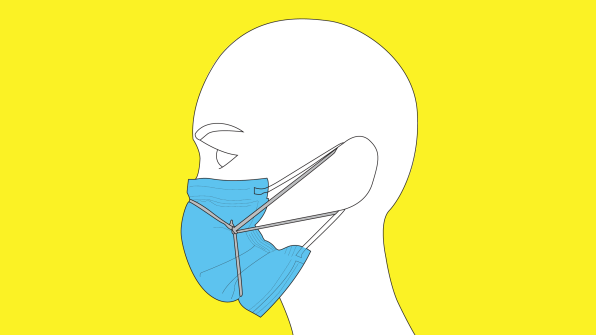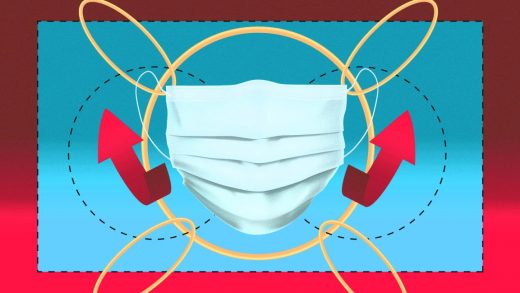If you don’t want to double mask, here’s how to make surgical masks more effective
In lab tests, the CDC found that exposure to infectious particles dropped around 95%—the same performance guaranteed by N95 masks—when masks fit tightly. One way to do that is “knotting and tucking,” or making a knot at the edge of a medical procedure mask (more commonly called a surgical mask by the public) along the edges, and then tucking in the extra material to make the mask as flat as possible on the face. Here’s a simple demonstration:
@oliviacuidmd Highly requested 60s version of my viral mask hack #fyp #doctorsoftiktok #masktutorial #covid19 #viral #maskhack #learnontiktok
The CDC also says that using a “mask fitter” is effective—something like the simple frame designed by Fix the Mask, a startup co-led by an ex-Apple designer who wanted to find a solution to protect medical workers early in the pandemic. The startup first recommended a DIY fix with rubber bands, and then designed a mask brace that can be placed over a surgical mask to close gaps at the sides of someone’s face. Since surgical masks don’t come with official labels certifying their effectiveness, the team also tested some common brands itself.

As another option, the CDC suggests that cutting a pair of nylons and pulling the “sleeve” over a mask can also improve fit. Most masks can also be tweaked in other ways to fit better. “Other ways to improve the fit and performance of your mask are to ensure your mask has a metal nose bridge that bends closely to fit around your nose and to choose a mask with straps that can be tightened around your head, not just your ears, because you can get a tighter fit,” Lindsay Marr, a professor of civil and environmental engineering at Virginia Tech who studies airborne disease transmission, said in a statement. “You should feel the mask sucking inward when you breathe in, and if you hold your hands around the sides of the mask, you should not feel any air leaking out when you breathe out.” Even a small gap, she says, can degrade performance by as much as 50%.
The mask’s ability to filter particles is also important, Marr says. “Certain materials are better than others at blocking small particles. These include non-woven polypropylene, which is used to make N95s and many surgical-type masks, HEPA filters, HVAC filters rated MERV 13 and higher, and some vacuum cleaner bags. Among fabrics, tightly woven cotton works best.” If you use a cloth mask, it’s best to use one with multiple layers and a pocket for holding a filter—but an approved surgical mask plus a mask brace is a much more effective option.
At a basic level, though, any attempt at wearing a mask is better than the alternative. “Any mask is better than no mask,” John Brooks, chief medical officer for the CDC’s COVID-19 response, said in a statement. “Wearing a mask protects you and everyone in your community.” That’s in addition, of course, to staying six feet apart and avoiding crowds and travel—things that may also have to continue until many more people are vaccinated.
(57)



